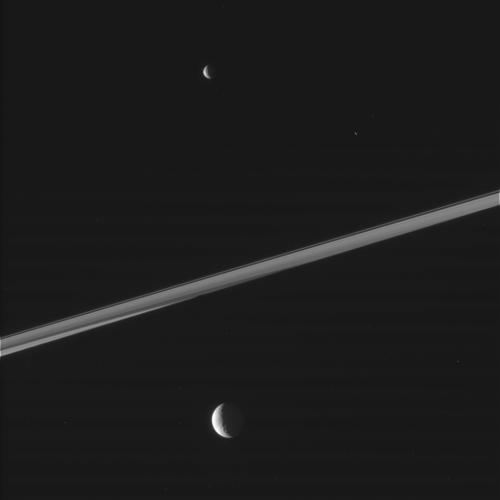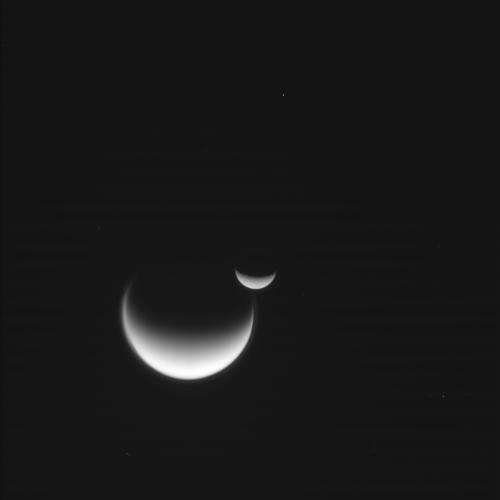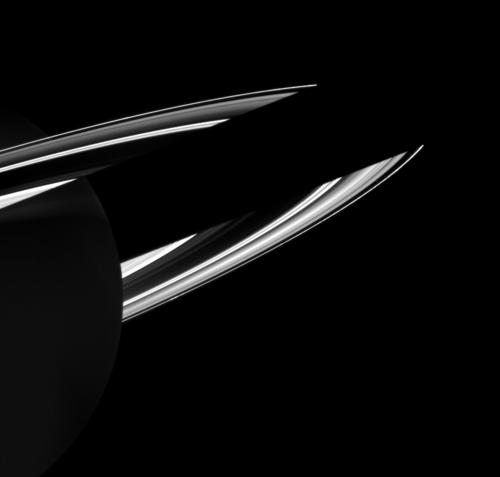[/caption]
I often ponder whether the Cassini spacecraft is a better scientist or artist. I found three recent images from Cassini that definitely give the nod to artist, but surely there’s lots of great science here as well. In this image, Saturn casts its shadow on the rings, but it also shows how the rings reflect sunlight onto the dark side of the planet. Here Saturn appears dimly illuminated by this ringshine. This view looks toward the southern, unilluminated side of the rings from about 10 degrees below the ringplane, and was taken on Jan. 2, 2010 when Cassini was about 2.3 million kilometers (1.4 million miles) from Saturn. Below: beautiful moons.

While this image is stunningly gorgeous, perhaps the most amazing thing is that it was snapped by Cassini’s cameras just yesterday (March 15, 2010) and beamed back to Earth today! This is a raw, uncalibrated image and the only details posted about it is that the camera was pointing toward Tethys at approximately 2,410,546 kilometers away. Can anyone guess what the second moon is?

Another beauty, Dione and Titan make a smiling pair of crescent moons. This image was taken on March 12, 2010 and received on Earth March 13, 2010. The camera was pointing toward Dione at approximately 2,211,699 kilometers away.
For more great images see the Cassini website, or the CICLOPS website


Hi, I’m writing from Rome so I apologize for my English : )
In the second image, the moons are Tethys and Mimas. The image was taken on 15 March at 16:30 UTC (about).
In the sequence of the third image, I think it’s instead visible Polydeuces and Dione and Titan, of course. The sequence was taken on 12 March, from about 12:50 to 13:10 UTC (about).
I thought Galileo’s Jupiter images would never be ‘topped’. I was wrong…